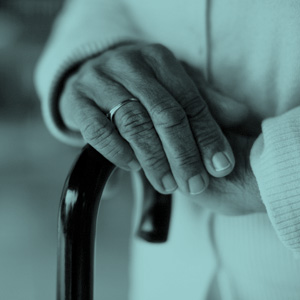
Breakfast Seminar
April’s Care Conversation heard from Chief Design Officer at the Design Council, Mat Hunter, on how good design can improve the quality of care
- NULL - NULL
- NULL
“When it comes to design, joy, delight and aspiration are as important as utility,” Mat Hunter told Care Conversation delegates. “Everything that’s around us, that isn’t nature, has been designed.”
The Design Council’s roots were in a period of post-war austerity, he said, when its aim had been to try to help create a consumer market. “Now, design is adding more to the economy – and growing faster – than many other sectors, but it’s still not very well understood beyond the high street. We as consumers know about what it is to buy a telly or a lamp or a sofa, but we can still be at a loss about what it is to buy care.”
Good design should be “useful, usable, delightful”, while bad design was when something was failing one of those tests. “Bad design is when no one has thought about the utility, let alone the delight,” he said, as could be seen in those hospital wards designed without a thought for people’s dignity. “We know that institutionally things are failing, and the high street is also at a loss when it comes to helping people with ambulatory difficulties equip their kitchens and bathrooms, for example.”
The huge impact design could have had been demonstrated when his organisation had helped to bring about a 50% reduction in violence and aggression against A&E staff simply by improving signage, he pointed out. “All of us are capable of kicking off – not just people who are inebriated or who have mental health issues – if we feel our needs aren’t being met.”
Driving adoption was hard, however, when it came to things like infection control, patient dignity and reducing aggression, he said. “That’s because it’s commissioners who are buying, not consumers buying for themselves. Does co-design with clinicians help? Lord Darzi has stated that service designers should be embedded in every hospital system in the UK.”
It was “all about shifting values”, he told the seminar. “We have to think about what we want to see in the future. But most of what we’re talking about here is in a statutory context, where money is tighter than ever.”
However there was now a generation of people coming into their 60s and 70s who had more money than ever before, he stressed, and who could help to drive change. “That then raises those questions of do we really break people down into segments, and should we all be moving forward at the same speed? Can we alter our values to demand aspiration, joy and delight, and will personal care budgets unleash consumer forces? Because, at the moment, the system doesn’t design in empathy and kindness.”
In terms of those consumer forces, social media obviously had a central role to play, but trusting it to help make informed choices about care it was “still in its infancy”, he said. Clearly, also, not everyone’s needs were the same. “We want to stay in our own homes, and we want our homes to be adapted. My vision of life in my 90s is that I’d like normalcy, but when I’m talking about being in my home it’s because my friends and family are around me. What about those people whose social networks have broken down?”
Crucially, good design did not have to cost more, he told the seminar. “If you’re talking about the fabric of a building then good interior design that makes it feel more homely will cost exactly the same as something that makes it feel like a horrid institution. Can we transform commissioning to really understand what individuals want?”
Get in touch to register your interest in joining the network
View all past events
